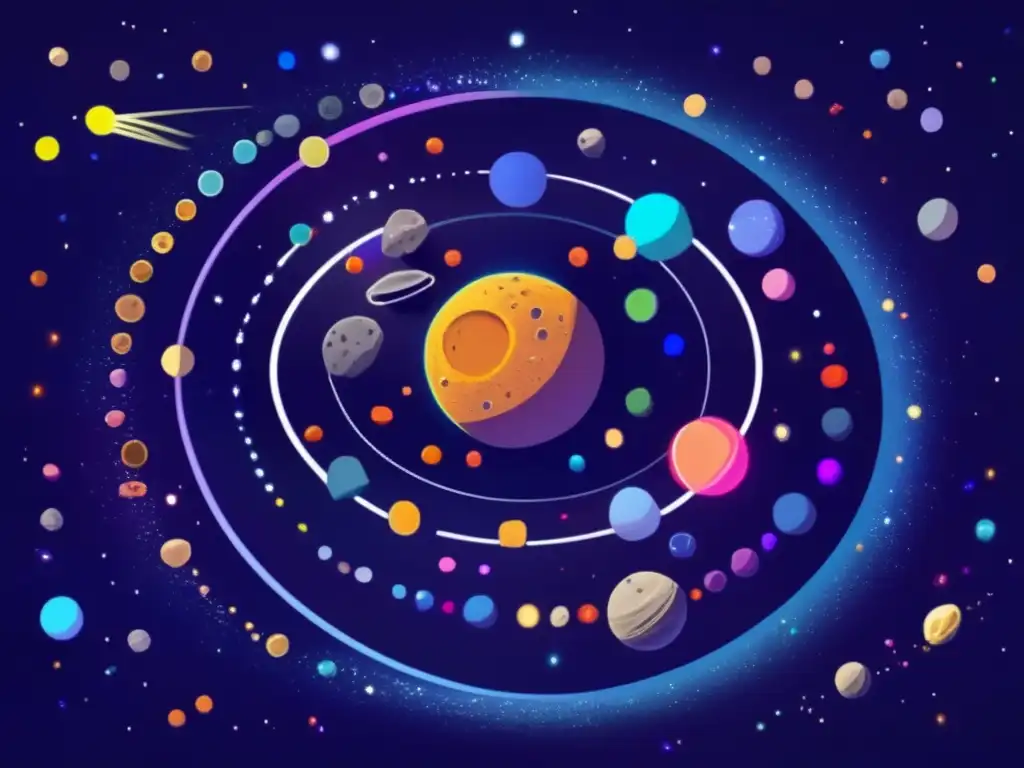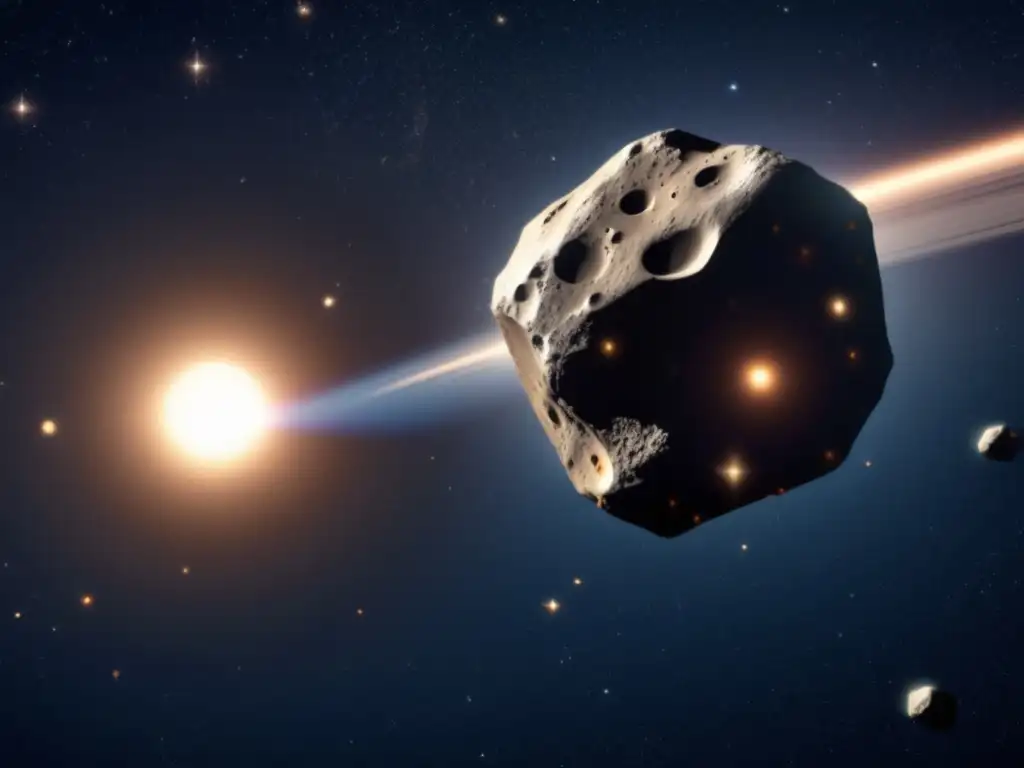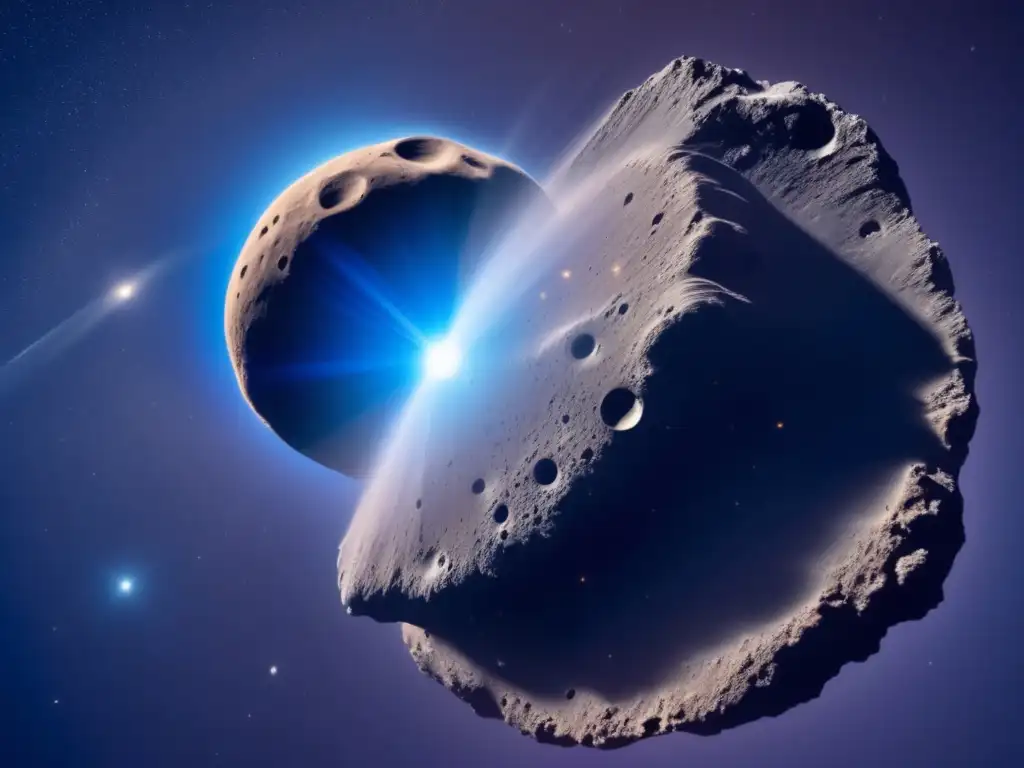Understanding Asteroid Orbits For Better Observation

Introduction
Asteroids have long captivated the imagination of humans, and their study has led to significant advancements in our understanding of the solar system. One crucial aspect of studying asteroids is understanding their orbits. By analyzing and comprehending asteroid orbits, scientists can better observe these celestial objects, predict their movements, and gather valuable data about their composition and behavior. In this article, we will delve into the intricacies of asteroid orbits and explore their significance in the field of astronomy.
The Elliptical Path of Asteroids

Eccentricity: A Measure of Deviation
Asteroid orbits are generally shaped like ellipses, a type of elongated circle. The eccentricity of an orbit measures its deviation from a perfect circle. An eccentricity of 0 indicates a perfectly circular orbit, while an eccentricity greater than 0 signifies an elliptical orbit. This characteristic plays a vital role in determining an asteroid's behavior and path through space.
Perihelion and Aphelion
Two key points define an asteroid's elliptical orbit: the perihelion and aphelion. The perihelion refers to the point at which the asteroid is closest to the Sun, while the aphelion represents the farthest distance from the Sun in its orbit. Understanding these points is crucial for predicting an asteroid's position and trajectory.
Inclination: Tilted Orbits
Asteroid orbits can also be tilted or inclined relative to the plane of the solar system. This inclination determines how an asteroid moves in relation to the planets and other celestial bodies. A higher inclination means the asteroid's orbit is more inclined, while a lower inclination indicates a less tilted orbit. Asteroids with high inclinations often exhibit more complex and peculiar paths.
Asteroid Families: Clues from Orbital Resonances

Orbital Resonance Patterns
Observing the orbits of asteroids has allowed scientists to identify several families or groups of asteroids that share similar characteristics. These families often occur due to orbital resonances, which arise from specific ratios between an asteroid's orbital period and the period of a major planet. Notable examples include the Kirkwood gaps caused by interactions with Jupiter and the Hilda family associated with resonance with Saturn.
Composition and Origin Insights
Studying asteroid families and their orbital resonances provides valuable insights into their composition and origin. By analyzing these groups, scientists can better understand the formation processes that occurred in the early solar system. Furthermore, knowing the composition of different asteroid families helps determine their potential for containing valuable resources and their relevance to future space exploration missions.
Yarkovsky Effect: Altering Orbital Paths
Another phenomenon tied to asteroid orbits is the Yarkovsky effect. This effect occurs when a small but continuous thermal radiation from the asteroid causes a slight imbalance in its orbit, potentially altering its path over time. Understanding this effect is essential for accurately predicting an asteroid's long-term trajectory and assessing any potential collision risks with Earth.
Gravitational Interactions: Perturbing Asteroid Orbits

Jupiter: A Dominant Influence
The gravitational pull of massive bodies, such as planets, can significantly affect asteroid orbits. Jupiter, with its immense size and gravitational force, plays a particularly dominant role in perturbing the paths of asteroids. The interaction between asteroids and Jupiter can result in the ejection of asteroids from the solar system or their redirection towards inner regions with potentially hazardous consequences.
Near-Earth Objects: Altered by Close Encounters
A special category of asteroids, known as near-Earth objects (NEOs), have orbits that come close to intersecting with Earth's orbit. These encounters can lead to significant alterations in the orbits of NEOs, making them a topic of particular interest and concern. Studying the dynamics of these interactions is crucial for assessing potential impact hazards and devising methods for planetary defense.
Trojans and Co-orbital Asteroids
Some asteroids occupy stable positions called Lagrange points, where the gravitational forces from the Sun and a planet balance each other out. These asteroids are known as trojans or co-orbital asteroids. They share an orbit with a planet, either leading or trailing it by 60 degrees. Studying trojans provides valuable insights into the history and dynamics of the solar system.
Frequently Asked Questions

-
What is the significance of an asteroid's eccentricity?
Asteroid eccentricity determines the shape of its orbit, impacting its distance from the Sun and its overall behavior in space.
-
How do orbital resonances help identify asteroid families?
Orbital resonances create distinct patterns in asteroid orbits, allowing scientists to group them based on shared characteristics and origins.
-
How does the Yarkovsky effect influence asteroid orbits?
The Yarkovsky effect alters asteroid orbits over time due to the continuous emission of thermal radiation, affecting their long-term paths.
-
What role does Jupiter play in perturbing asteroid orbits?
Jupiter's gravitational pull significantly affects asteroid orbits, potentially leading to ejections from the solar system or redirection towards inner regions.
-
Why are near-Earth objects a topic of concern?
Near-Earth objects have orbits that intersect with Earth's orbit, making them relevant for impact hazard assessment and planetary defense strategies.
Conclusion
Understanding asteroid orbits is crucial for astronomers and scientists studying these enigmatic celestial objects. By comprehending the eccentricity, perihelion, aphelion, inclination, and resonances associated with asteroid orbits, researchers gain valuable insights into their composition, origin, and behavior. Gravitational interactions and orbital perturbations further enhance our understanding of asteroids and their potential impact hazards. As we continue to explore the depths of space, a comprehensive understanding of asteroid orbits paves the way for better observation, prediction, and exploration of these captivating celestial entities.
We hope you found this article informative and engaging. Please feel free to share your thoughts and comments below. Stay connected with www.asteroidrealm.com for more exciting content related to asteroids and other celestial wonders. Don't forget to subscribe and share this article on social networks to spread the fascination of the asteroid realm. Thank you for your time and attention!
Additional Resources

For more information on asteroid orbits and related topics, check out the following resources:
- NASA - National Aeronautics and Space Administration
- NASA Jet Propulsion Laboratory (JPL)
- International Astronomical Union (IAU)
- European Space Agency (ESA)
- Asteroid Realm - Explore the Fascinating World of Asteroids
 The Influence Of Moon Phases On Asteroid Observation
The Influence Of Moon Phases On Asteroid Observation The Evolution Of Telescopes And Asteroid Observation
The Evolution Of Telescopes And Asteroid ObservationIf you want to discover more articles similar to Understanding Asteroid Orbits For Better Observation, you can visit the Telescopes and Asteroid Observation category.
Leave a Reply

Articulos relacionados: